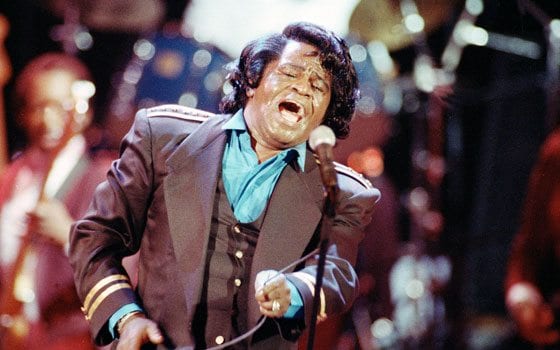
ORANGEBURG, S.C. — James Brown knew all along that he wanted to open a museum to inspire people — especially the poor — to pursue their dreams. So he carefully saved all his belongings, from glittering suits and glossy shoes to the comb he used to neatly sculpt his hair.
The soul singer who died in 2006 says so himself in an exhibit now on view at South Carolina State University that showcases the attention he paid to his roots, his eclectic tastes and his showman’s image.
“I’m going to make a James Brown museum because I want people to know that a young kid really has a chance to make it. And the only way they have a chance to make it is if he has somebody around to look at,” Brown says as he combs his hair on a video displayed at the exhibit.
Brown, who died of heart failure at 73, grew up poor during segregation in a rural county of South Carolina and rose to stardom with hits like “Papa’s Got a Brand New Bag” and “Please, Please, Please.”
Since his death, attorneys for his family and the trust he established for poor children have haggled over how to divide his estate. That fight has delayed plans supported by some of the family to turn his Beech Island home into a museum and site for his mausoleum, along the lines of Elvis Presley’s Graceland estate.
In the meantime, many of Brown’s belongings are being shown for the first time at the historically black college, chosen because of Brown’s support for civil rights and education. The free display opened Feb. 20 and runs until Sept. 1.
Fans get their first look at a tattered bathrobe and the crystal-studded suits Brown wore as he shimmied, split and glided across stages worldwide.
While the exhibit skirts Brown’s run-ins with the law, daughter Deanna Brown explained to The Associated Press during a tour that the robe was torn in a tussle with police during her father’s 2004 arrest on criminal domestic violence charges.
The suit Brown wore to the Atlanta hospital where he died and the one he had laid out for the next day are also displayed, along with the hair curlers he used to form his signature pompadour.
“Each item tells a story of a struggle and or an accomplishment in his life, be it at home or be it traveling the world,” Deanna Brown said as she walked through the exhibit, wiping away tears. “When you think of how poor Dad was, where he came from — poor as you can imagine — and for his collection to be seen as historical, it shows magnitude.”
The public life of “The Godfather of Soul” is shown in photos with figures like Elton John and late U.S. Sen. Strom Thurmond. Other artifacts show the eclectic tastes of his private life, like his Asian and Native American artifacts, the telescope he used for his amateur astronomy hobby, and some somber reminders of his heritage: elephant tusks, bits of cotton plants and rusted slave chains that he kept in a closet.
“He said he always wanted to remember where he came from,” museum director Ellen Zisholtz said.
Even photos of Brown’s home reveal something of his complex, larger-than-life personality. He built his mansion around a smaller home he had purchased earlier, creating a unique layout, Zisholtz said.
Brown’s family has big plans for preserving his legacy and his daughter said interest in the museum has come from around the world.
“There are people who can’t even speak English that love James Brown. They can say, ‘I feel good,”’ Deanna Brown joked. “So we are hoping that one day it can really be a historical James Brown tour and everything that he was about could be explored.”
(Associated Press)






